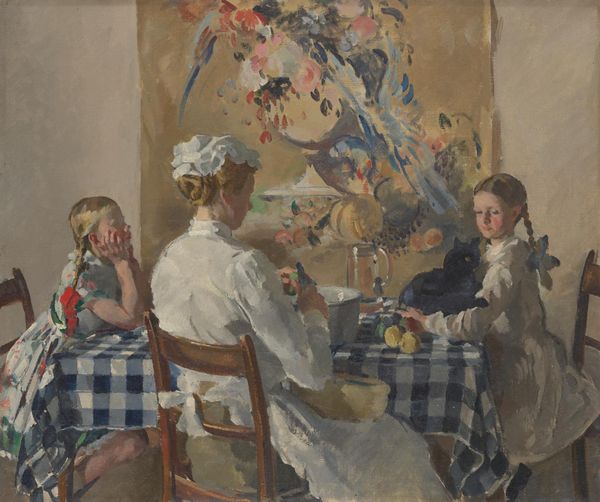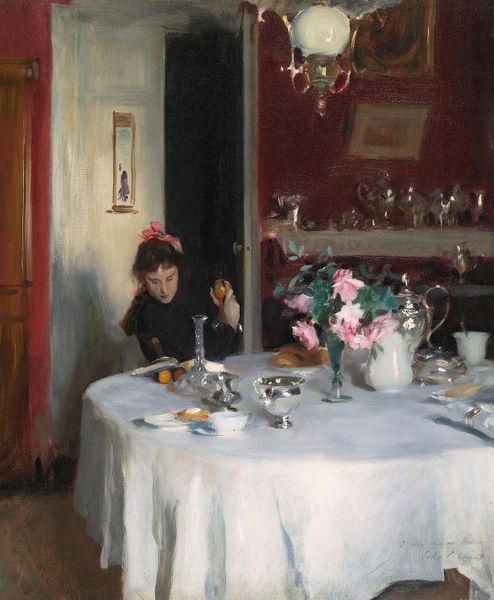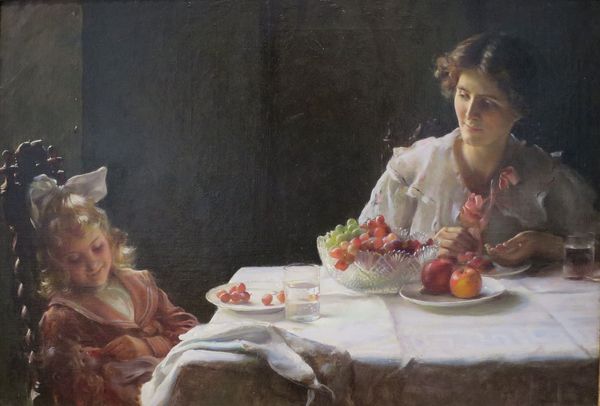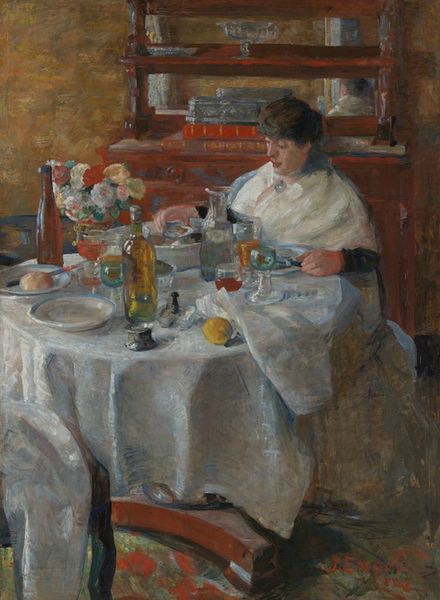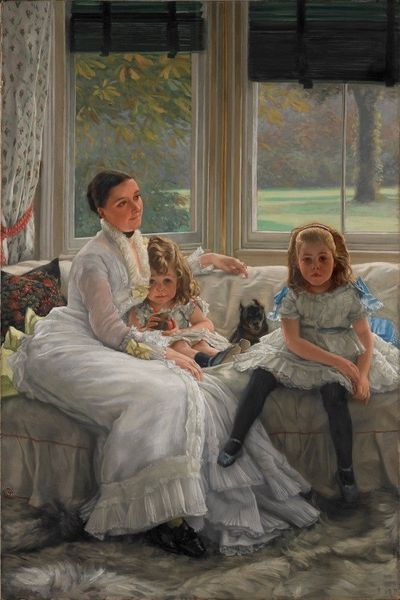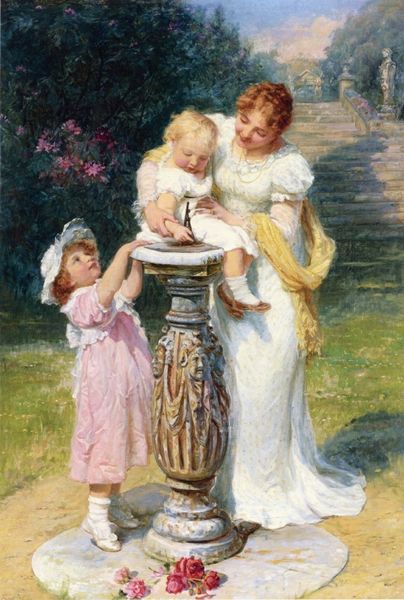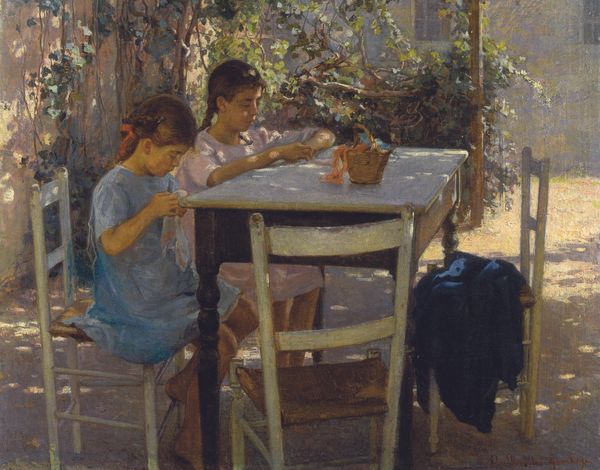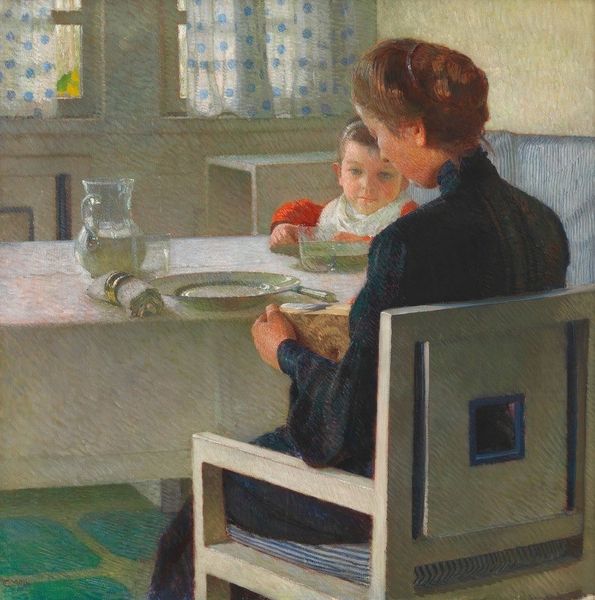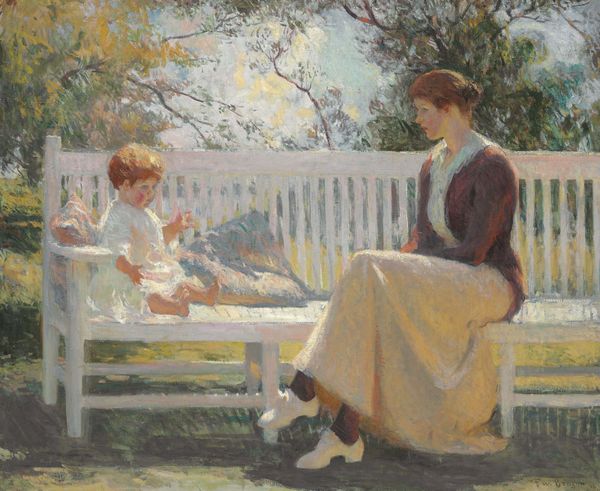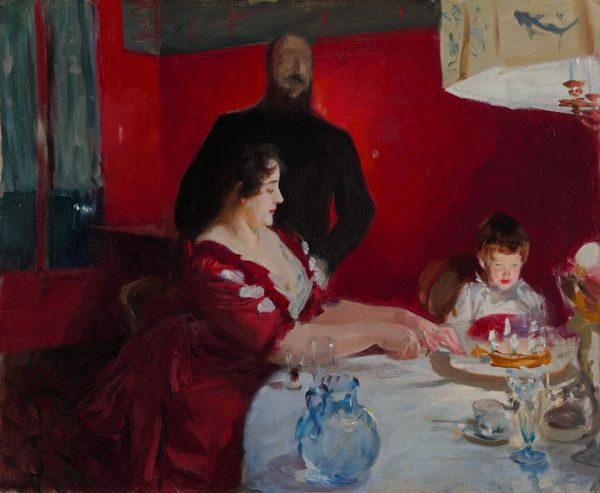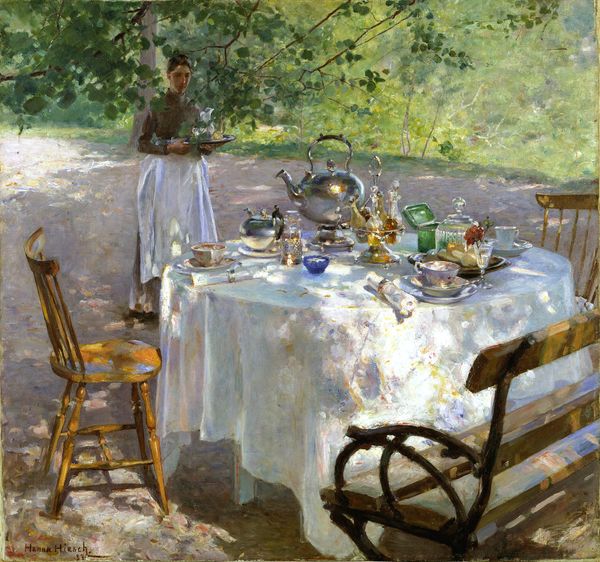
Dimensions: support: 546 x 660 mm frame: 684 x 802 x 80 mm
Copyright: CC-BY-NC-ND 4.0 DEED, Photo: Tate
Curator: Hilda Fearon, born in 1878, offers us a glimpse into domestic life with her painting, "The Tea Party," housed here at the Tate. Editor: The immediate impression is one of quiet domesticity, softened by the sunlight and the gentle expressions of the figures. But there’s a subtle melancholy there, too. Curator: The image of the "tea party" itself is laden with cultural significance. What is the meaning of women performing that role? It invites us to consider the social expectations and limitations placed on women during this period. Editor: Beyond its social implications, the tea service itself becomes a symbol of order, control, and the careful choreography of social interactions. Curator: Absolutely, it speaks volumes about the female experience. Editor: And the flowers looming over the sitters almost become like an imposing emblem of nature, as though representing their own fleeting beauty. Curator: Seeing it through that lens really deepens my appreciation. Editor: Indeed, it is that interplay between surface serenity and underlying complexity that makes this painting so compelling.
Comments
Join the conversation
Join millions of artists and users on Artera today and experience the ultimate creative platform.
tate 8 months ago
⋮
Fearon studied at the Slade School of Art and in the Cornish fishing towns of St Ives and Newlyn, where many artists painted out of doors. Her paintings appeared at all the London venues for modern art in the years leading up to and during the first world war, also attracting attention in Glasgow, Dublin, Paris, Venice and Pittsburgh. Like many painters of the period, Fearon used Impressionism to depict contemporary life as transitory but knowable. Gallery label, February 2010
